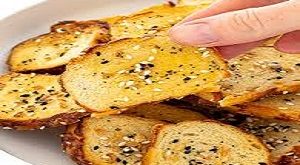The Mediterranean diet is more than just a way of eating—it’s a lifestyle rooted in the traditional foods of countries bordering the Mediterranean Sea. Known for its heart-healthy benefits, weight management properties, and overall wellness perks, this diet emphasizes whole foods, healthy fats, and a balanced approach to nutrition. Let’s dive into a step-by-step guide to adopting the Mediterranean diet.
Step 1: Understand the Core Principles
The Mediterranean diet is built on fresh, whole, and minimally processed foods. Here’s what makes it stand out:
✅ High intake of vegetables, fruits, whole grains, legumes, and nuts
✅ Olive oil as the primary source of healthy fats
✅ Moderate consumption of fish and poultry
✅ Limited intake of red meat and processed foods
✅ Herbs and spices for flavor instead of salt
✅ Enjoying meals with family and friends
Step 2: Fill Your Plate with Plant-Based Foods
The foundation of this diet is plant-based foods, which are rich in fiber, vitamins, and antioxidants. Make sure to:
- Eat a variety of colorful vegetables and fruits daily
- Opt for whole grains like brown rice, quinoa, whole wheat bread, and oats
- Add legumes such as lentils, chickpeas, and beans to your meals
- Snack on nuts and seeds like almonds, walnuts, and sunflower seeds
Step 3: Use Olive Oil as Your Primary Fat Source
Replace butter and processed oils with extra virgin olive oil (EVOO). This healthy fat:
- Lowers bad cholesterol (LDL) and boosts good cholesterol (HDL)
- Reduces inflammation and supports heart health
- Enhances the taste of salads, vegetables, and even grilled meats
Step 4: Eat More Fish and Less Red Meat
Fish, especially fatty fish like salmon, sardines, and mackerel, is a key protein source in the Mediterranean diet. Aim for:
🐟 At least two servings of fish per week
🐔 Moderate intake of lean poultry
🥩 Limit red meat to a few times a month
Step 5: Flavor Your Food with Herbs and Spices
Instead of relying on salt, enhance your dishes with:
🌿 Basil, oregano, rosemary, and thyme
🧄 Garlic and onion for depth of flavor
🌶️ Spices like turmeric, cinnamon, and cumin
This not only boosts taste but also provides additional health benefits.
Step 6: Enjoy Dairy in Moderation
Dairy is not eliminated but consumed in moderation, primarily in the form of:
🧀 Greek yogurt (a great source of probiotics)
🧀 Hard cheeses like feta and Parmesan in small amounts
Step 7: Stay Hydrated and Drink in Moderation
- Water should be your main beverage throughout the day
- Herbal teas and black coffee (without sugar) are excellent choices
- Red wine can be enjoyed in moderation (one glass per day for women, two for men)
Step 8: Stay Active and Social
The Mediterranean lifestyle isn’t just about food—it also promotes:
🚶♂️ Daily physical activity (walking, cycling, or dancing)
👨👩👧👦 Social meals with family and friends
🧘 Stress management through relaxation and mindfulness
Step 9: Plan Your Meals and Stick to the Diet
To make your transition easier:
- Create a weekly meal plan with Mediterranean-inspired dishes
- Stock your pantry with essential ingredients like olive oil, whole grains, and fresh produce
- Try simple recipes like Greek salad, hummus, or grilled fish
Conclusion
The Mediterranean diet is not just about what you eat but how you eat. By focusing on fresh, whole foods, healthy fats, and a balanced lifestyle, you can enjoy long-term health benefits, including improved heart health, weight management, and overall well-being. Start today and embrace the Mediterranean way of life!
Would you like me to add meal plans or recipes to complement this guide? 😊


